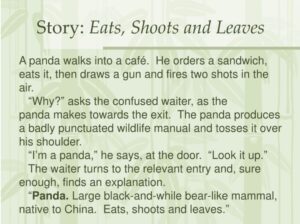The romantic poetic movement occurring in the late 18th and early 19th centuries, opposing the mannered formalist ethos of the Enlightenment era and the disciplined scientific inquiry that preceded it. William Wordsworth, Samuel Taylor Coleridge, John Keats, Percy Bysshe Shelley, William Blake, and Lord Byron were English poets who wrote poetry that expressed emotion and sought parallels to their own emotional lives in nature. Find out more about the poems by Romantic poets.
How did the Romantic movement begin?
What was the catalyst for the Romantic Era to start? An understanding of the historical context helps us answer this question. Romanticism was partly a reaction to ideas of the era before it, as many intellectual movements have been. Prior to the Romantic Era, the Enlightenment period (1715-1789) was marked by rationalism, science, and empiricism. To put it another way, the Enlightenment Era was about facts and rational thinking!
In 1789, two major events brought an end to the Enlightenment Era: the Industrial Revolution and the French Revolution.
The world changed almost overnight when the Industrial Revolution began in Europe. (That’s why it’s called a “revolution,” of course!) New powered machinery was developed in the 1780s, factories popped up all over cities, and mass production began. People began moving from rural areas and into increasingly crowded cities to take advantage of the new jobs and opportunities created by industrialization.
In addition to the Revolution, the French Revolution influenced the early years of the Romantic Era. In France, the working class staged a revolt against the monarchy and overthrew it to gain freedom and equality. As was happening in France, rebellious sentiment spread across Europe, and the Romantic Era was set by that spirit.
A Comparison of the Enlightenment and the Romantic Era
After the Enlightenment, industrialization, and the French Revolution, the Romantic Era’s greatest thinkers had something to say. For one thing, Romantic thinkers responded to the hard rationalism of the Enlightenment by reviving emotions and feelings, the irrationality of nature, and a belief in the individuality of the thinker.
The Romantics also stressed the tranquillity of rural landscapes, the power and grandeur of natural phenomena, and the need to protect the wildness of nature, in response to the mass production and urbanization that accompanied the Industrial Revolution.
Freedom, independence, and equality — the hallmarks of the French Revolution — eventually reached the rest of Europe and were embraced by Romanticism as well. Thinkers of the Romantic Era rebelled against anyone who tried to limit their minds, creativity, and imaginations and sought to resist societal control.
Key Themes of Romantic Poetry
Topic 1: Humanity and Nature
Relationships between humans and their natural environment are a major theme of Romantic poetry. It was believed that the Romantics felt that humans’ internal lives and the outside, natural world had a lot in common: both could be mysterious, open and wide, wild and free, and sometimes even terrifying.
During the Enlightenment and Industrial Revolution, which we discussed earlier, the Romantics tended to dwell on the relationship between humans and nature.
Enlightenment thinkers tried to explain natural phenomena rationally. In a similar way, industrialism was dependent on man’s ability to harness natural forces, like water power and fossil fuels. A big human workforce was also needed in the new industrial society. Over the years, long, harsh, and low-paying jobs forced more people into dirty, crowded cities, and they also worked long, hard hours in grimy factories.
So what was the reaction of Romantic poets to how the Enlightenment and Industrial Revolution used and controlled nature and humans? Rather than instilling fear and reverence in humans, they portray and praise nature’s power.
Think about a time when you heard a thunderclap. Although it was a pretty cool thing to hear, it probably startled you, didn’t it? The same goes for the fact that nature can be both awe-inspiring and scary simultaneously.
In the Romantic era, those moments of awe and terror in response to great natural phenomena were spiritual experiences. A spiritual connection to nature came to be known as “the Sublime.” In the midst of industrialization, the Romantic poets felt they were obligated to depict the Sublime in their poetry in order to maintain that spiritual connection to nature.
Topic 2: Gothic and surreal
Frankenstein is one of the first things that most people think of when they think of the Gothic and the surreal in literature. Readers find Gothic thrilling because of its depictions of terrifying or horrifying phenomena. When you watch a scary movie or walk through a haunted house, you feel the rush of adrenaline. People enjoy being scared, and this is reflected in Gothic literature.
Gothic and Surrealism often go hand-in-hand. By triggering people’s unconscious imagination, surrealism mines people’s irrational imaginations in order to subvert–or challenge–normal life. Remember a bizarre dream you had recently where the situation you were in wasn’t quite real. Dreams often blend pieces of reality with memories of your loved ones, no matter what they involve. It’s surreal that works in this case!













